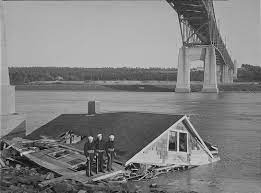Super Storm Sandy hit America forcefully, both in a physical and in a psychological way. Now that the New York/New Jersey area has been hit by major weather events not just in successive years but (with the winter storm Athena) in successive weeks, many are wondering if global climate change is finally fulfilling the warnings that scientists have been making for decades and whether this situation is now “the new normal.” While weather is extraordinarily complicated, it was recently noted in the press that no one under 27 years of ages has ever experienced even a single month that was below normal for the last hundred years in the United States, so (as the song says) you don’t need to be a weatherman to know which way the wind is blowing.
So, given the probability that more severe storm events and rising water levels are ever more likely, what can be done? First and foremost, being smart with your energy usage is a no-brainer. Not only will practicing energy conservation help curb (and hopefully someday reverse) the increase in greenhouse gases, it will in fact save you money, which has never been more important. As oil trucks have been prevented from reaching houses, some homeowners are considering the possibility of deriving their heat not from burning oil but from taking the heat out of the ground from below their buildings by geothermal heat exchange. To provide the minimal amount of electricity needed to circulate the heat exchange medium they are considering using either solar energy or generators so that they are not dependent upon electrical energy from the grid. These are solutions to help fight global warming and decentralize heating requirements.
One thing that each person can easily do for free is to check their building located on the online FEMA flood maps. These maps are being updated to reflect the increasing dangers as global sea levels rise. Sometimes structures that are far from the waterfront are in flood plains because of low geographic conditions and it is best to be aware of the danger that a building may face before there is a flood. If you are in a flood zone there are several ways to deal with the situation. Special flood gates can allow water that is flowing quickly to actually enter into the building rather than knocking down a wall that is fixed with no way to counteract the tremendous lateral force of the moving water. If this is the case it is best to relocate all the mechanical equipment out of the basement. Tankless water heaters are not only more energy efficient but are compact and can be mounted on the wall of a closet well above the flood zone. High-efficiency boilers that use energy to 97% effectiveness can also be located above the flood line so that you will have heat in the aftermath of a serious flood. Lastly, the main electrical panel and wiring should also be located above a known flood line as water (particularly salt water) can corrode wires and turn them from conductors into resistors, meaning that they become like heating elements in a toaster that can greatly increase the chance of a fire in the aftermath of a storm surge or flood.
With regard to the construction and insulation of a structure, there are many new products that can allow for an easier and less expensive clean-up after a flood event. Green board and magnesium oxide board are two interior finish materials that can be used in place of paper-wrapped gypsum board, which deteriorates and becomes moldy when it gets wet. Closed-cell icynene insulation and rigid insulation (like Styrofoam) are largely impervious to water and will be minimally affected by flood or water damage and are excellent insulators that will help you reduce your energy use and expense. For exterior siding, zip board and other fiberglass wrapped sheathing products are much more resistant to water damage than typical strand board, which can absorb water like a sponge and become a food source for harmful molds.
Living through a flood or major power outage can be a stressful experience. What would be even more stressful is to have had the awful experience and not having done anything to better prepare should the same thing happen again. If you need to undertake a major repair of a home or building due to a storm or flood event, this is the best time to make changes that will put you on a better footing for the future. Inform yourself about new materials and technologies that may not have been available when your structure was built or last renovated. Work with a good architect or engineer to plan improvements to the design. Engage a competent and capable contractor to implement the best ideas to help you keep your family and building safe in the future!
Looking to remodel your home? Let’s connect.
Join the Architectural Forum to stay up-to-date with architectural news from Rhode Island and abroad.
Ross Sinclair Cann, AIA is a historian, educator, and practicing architect who lives in Newport. He is a LEED AP (Accredited Professional) and is a contributor to GrowSmart RI. This article was initially published in ARCHI-TEXT, in Newport This Week, November 11, 2012.
